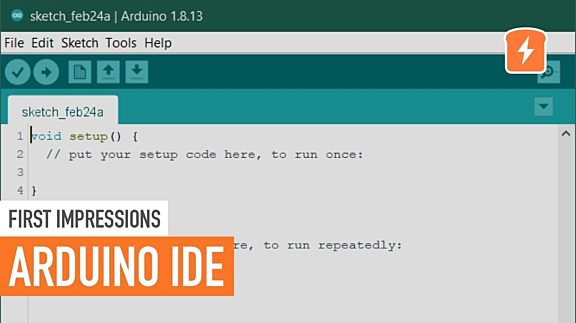Introduction to the Microcontroller and Single Board Computer Reviews - The First Impressions
Published
Hi guys! Here we go again! I hope you liked our previous tutorials about the PIC10F200 microcontroller and want some more. If so, then I welcome you here.
After a long pause we decided to start a new series of tutorials. This is going to be a big and ambitious project but I hope we’ll manage it. I call it “The First Impressions”.

I suddenly realized that I have a lot of development boards, kits and single-board computers (SBCs), and unfortunately I didn’t have time to work with them and even to test them. And then I thought “Hey, I can fulfil my curiosity and make it useful for others”. So, in this series I’m going to familiarize you with some well-known (and not as well-known) microcontrollers (MCUs) and SBCs. I understand that that task is huge taking into account that the number of different kinds of MCUs and SBCs that I have exceeds 30.

So these are really going to be the “first impressions”. For every type of MCU/SBC I will give a short description of the main features of the hardware and its distinctive features, then I’ll tell about the IDE or software that manufacturer recommends to use, and finally we’ll write some simple code to see how to work with these MCUs/SBCs.

We all understand that the electronics market is stuffed with choices and each vendor lauds its product and says that its product is the best of the best. And thus it’s really hard sometimes to choose the part most suitable for your application. In this series, I’ll try to help you with this. Also, one of the main goals of the following tutorials for me is to estimate the entry threshold of development for different MCUs/SBCs, how hard it is to actually get started with them.

To be clear, I’m not a newbie in the electronics world, and I’m very familiar with some of the parts I’m going to review but I’ll try to be unbiased and look at them as if I were seeing them for the first time. With other parts it will be easier as it will truly be my first impression about them, so no tricks here.

Initially, I was going to talk about only MCUs in this series but Josh insisted on including the popular single-board computers as well and I agreed because, well, why not? Also, there is a special class of MCUs which is called wireless MCUs. They have built-in radio modules which allow the microcontroller to communicate wirelessly via Wi-Fi, Bluetooth, ZigBee, LoRa and other protocols. I will consider them as well, taking into account that some of them have become very popular recently.

Some may be asking for some details, complaining that I haven’t said anything specific yet and you still don’t know what to expect. Fair enough! Here’s the list of the MCUs/SBCs I have, sorted by vendors (I might forget something because I really have a lot of them, so this list can be expanded further with time). I marked SBCs with "*" and wireless MCUs with "**".
- Arduino (yes, I know it uses Atmel microcontrollers but I’ll consider them separately):
- Arduino Uno/Nano/Mini/Micro/Mega
- Arduino Due
- DigiSpark
- Raspberry Pi Foundation:
- Raspberry Pi 3 model B *
- Raspberry Pi Zero W *
- Espressif Systems:
- ESP8266 **
- ESP32 **
- Microchip:
- AVR
- PIC16
- SAME70
- ST:
- STM32F
- STM32L
- STM8
- Texas Instruments:
- MSP430
- CC430 **
- MSP432
- C2000
- TIVA
- HERCULES
- CC1100/CC2500 **
- CC2640 **
- CC3100 **
- BeagleBone *
- Infineon:
- XMC1000
- Renesas:
- Synergy
- RL78
- RX
- RZ
- Nordic semiconductor:
- nRF51 **
- nRF52 **
- Orange Pi:
- Orange Pi Zero *
- Orange Pi PC *
- Orange Pi i96 *
- Seeed Studio:
- Sipeed Lichee Nano *
- Silicon Laboratories:
- Busy Bee.
- Mighty Gecko **
- NXP:
- LPC1000
As you can see, the list is quite long, it has 13 vendors just from the top of my head and about 40 types of MCUs/SBCs.
I realize that some vendors are not present here or have a poor number of parts but this is what I have at home for now. If this series becomes popular, I’ll purchase some more boards and review them as well.
And that’s all for now! I will start my “Impressions” with the most popular boards: Arduino and Raspberry Pi, and then move down the list.
Hope to see you soon! More Microcontroller Basic Tutorials here.

Get the latest tools and tutorials, fresh from the toaster.














